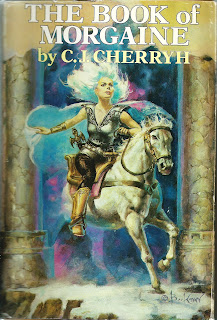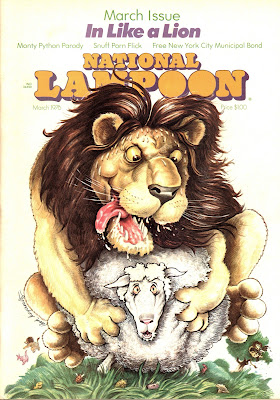Friday, March 10, 2023
Book Review: A Dream of Kinship
Tuesday, March 7, 2023
Book Review: The Faded Sun: Kesrith
At Cupboard Maker Books
Enola, PA
The section devoted to sci-fi is extensive, both for hardbound and paperback books. They also have a dedicated section for horror fiction, something of a rarity in used bookstores.
There are at least two cats on the premises, although one was apparently in quarantine........?!Most paperbacks are $3 each. I came away with a good selection of regular Old School potboilers (two with an emphasis on teen pregnancies ?!), and a couple of vintage science fiction titles:
Friday, March 3, 2023
Book Review: Interzone: The 1st Anthology
Summing up, the entries by Ryman, Edwards, Roberts, and Blumlein lend sufficient value to earn 'Interzone: The 1st Anthology' a three-star Rating. If it helps, I'd say it's a bit superior to the equivalent mid-80s 'Annual World's Best SF' sci-fi anthologies published by DAW Books, but inferior to the 1986 cyberpunk collection 'Mirrorshades'.
Wednesday, March 1, 2023
Two sci-fi stories from Playboy, 1972
Saturday, February 25, 2023
Zippy's Day
by Bill Griffith
Tuesday, February 21, 2023
Karl Edward Wagner's 'Sticks' audio drama
Sunday, February 19, 2023
Book Review: Rough Trade
Thursday, February 16, 2023
Book Review: Fires of Azeroth
I gave 'Fires' a three-star rating. The initial third of the novel, much like 'Well of Shuian', suffers from indolent pacing, as the author focuses rather laboriously on world-building and documenting the interactions between Morgaine, Vanye, and various new supporting characters. A plot device used throughout the trilogy, in which a dim-witted Vanye is captured by adversaires and must rely on guile and stratagems (related using long-winded dialogue passages) to gain freedom, evoked some exasperation in me. Indeed, much of the book revolves around verbal fencing matches, in which the participants vie to use the most elliptical and oblique verbiage available to them.
The final chapters of the novel, which finally advance the confrontation with the Shiuan horde and the desperate struggle to gain the master gate on Azeroth, bring some much-needed momentum back to the narrative and with it, justification for the reader's patience. I won't give out any spoilers, save to say that the ending of 'Fires' signals that Cherryh had ambitions - which were realized with her 1988 book 'Exile's Gate' - to write at least one more entry in the 'Morgaine' saga.
Summing up, those with a willingness to read a deliberately paced science fantasy, where character interactions are given primacy over plot development, may find 'Fires of Azeroth' rewarding and by extension, the 'Morgaine' trilogy.
Tuesday, February 14, 2023
International Dateline from National Lampoon
from National Lampoon, March 1976



































































